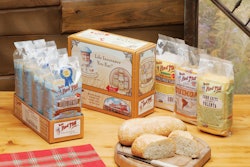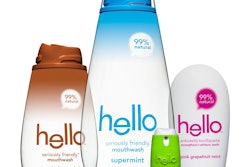
How did each of you receive your education in the area of packaging design and branding?
Bernie Hadley-Beauregard: I came to the brand business from the client side. I had worked within several specialty food firms in both operations and marketing, including Granville Island Brewing, Purdy’s Chocolates, and Starbucks Coffee. I always got a rush from developing innovative products that consumers gravitate to. I’ve long admired brands that take a brave path and enjoy solid rewards for their bold decisions. I’m also mischievous by nature, so I am thrilled to have found a career that allows me to manifest this trait day in, day out. I’ve come a long way from my straight-laced MBA heritage.
Laurie Millotte: Originally from France, I studied Applied Arts in high school for three years, where I touched on a bit of everything, from product design to fashion design to architecture. I was then very fortunate to study at the highly regarded Ecole Estienne in Paris. There I did two years in Multimedia (website design, animation, video, photography, etc.) followed by two years in Type Design (font design, book design, calligraphy, etc.). Once graduated, I took a one-year sabbatical and worked my way to the burgeoning city of Vancouver. I started at Brandever two weeks later. This is where I truly refined my knowledge of branding and packaging.
How do cultural differences play into your approach to packaging design?
BH: Cultural diversity brings out the very best in all of us. We often get hired by international firms wishing to capitalize on our own vantage point on North American culture and mentality. Additionally, many of our projects bring together an international collection of extremely talented contributors. Recently, for example, we completed a branding project for a Chilean Winery that bridged talent not only from Santiago but also from Vancouver, Iceland, France, and Italy. We often generate fantastic outcomes from such multi-cultural endeavors. We try to harness the power of diversity wherever possible.
LM: Right from the start, cultural differences were accepted and leveraged here at Brandever. I got hired partly because I promised I would never design a “boring French wine label.” At the same time I’m recognized for my cultural knowledge and appreciation for wine. We embrace cultural differences here because we know it makes us more open-minded and stronger. Differences make a project interesting.
In the conceptual development stage, is there sketching involved in the ideation? Do designers tend to jump right on the computer, and if so, is that good or bad?
BH: Surprisingly, at Brandever, sketching is minimal and basic at best. We spend more time openly discussing ideas in our open concept offices. Our ideation phase is much more conceptual and verbal than at other firms. Once an idea is intellectually thought through and refined, we then take on the challenge of “what in the world will this look like?” We like to keep this sketching stage loose and forgiving, as we know that the developmental process will further evolve the idea.
LM: I am the worst sketcher! But that doesn’t mean I don’t doodle. I do, it’s just that I am the only one that can make sense out of it! Putting scribbles on paper allows me to clarify ideas. I spend a lot of time on the computer as well. I thrive on finding talent from all over the world. I constantly keep a mental (and bookmarked) inventory of all the terrific illustrators, letterers, and graphic design studios that I come across. When a new project comes along, I love putting the pieces together--a mix of sketches, illustration references, and mock-ups. It’s really important not to focus on style or details at that stage. Just keep the ideas flowing, quickly prototype and observe the merits and weaknesses of your concept, and move on to the next one.
What are some of the biggest changes in the profession since you began your business?
BH: There has been a phenomenal growth in the amount of wine brands available in the marketplace. The shelves are overstocked with choice. Retailers and restauranteurs are motivated by value and by what will sell. There’s no more room for apologetic wines with non-memorable names.
LM: Brand owners today want packaging to resonate with consumers. One of our biggest challenges these days is communicating to the client that branding is essential, not just another thing on a “to do” list. When it’s done well, you don’t need that much advertising. We advise clients against skimping on a package design just so they can budget for advertising. It makes no sense when you consider that the package design will be on the shelf years after that two-week ad campaign is over and done with.
Finally, we find it important to question the rules. Does the brand name really have to be on the package front? Do we really need a front and a back label? Can we print here while nobody else does? Keep an open mind, and take a fresh approach to any new project.
What advice would you have for anyone starting out?
BH: Don’t try to simply please the client. Aim to thrill the consumer. Do this and your client will become a raving fan of your creative contribution to their business.
LM: Branding and packaging design are incredibly diverse. Don’t be overwhelmed with the scope of a project. This profession constantly requires you to zoom in and pay attention to details while regularly stepping back to see the bigger picture. That’s what makes it fun and rewarding! PW
Marianne Rosner Klimchuk ([email protected]) is Associate Chairperson, Associate Professor, Packaging Design Dept., Fashion Institute of Technology.


























